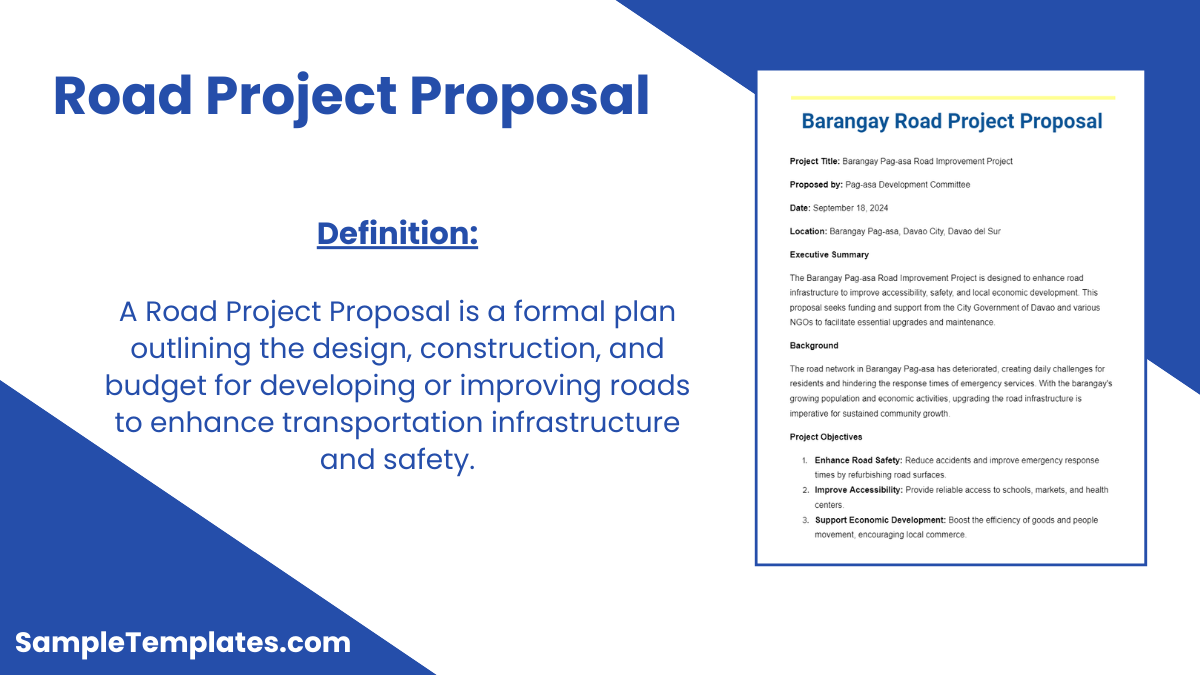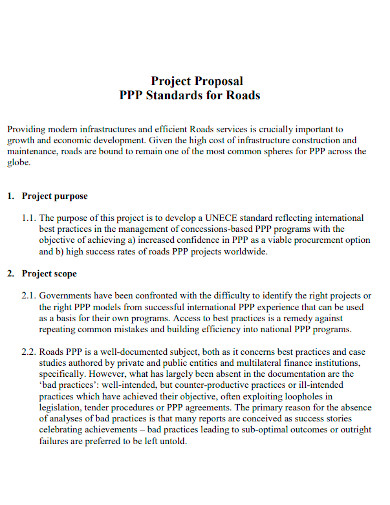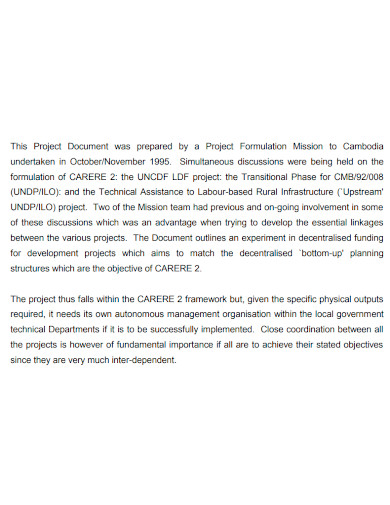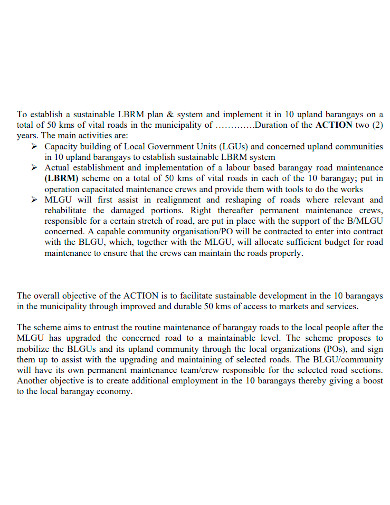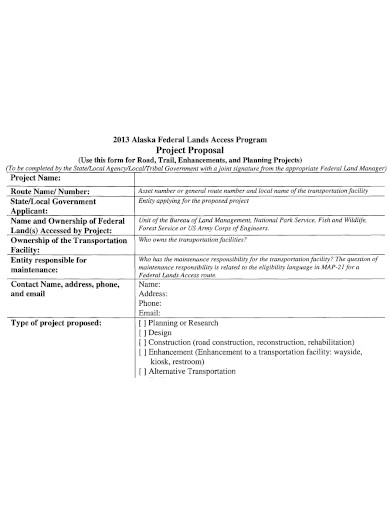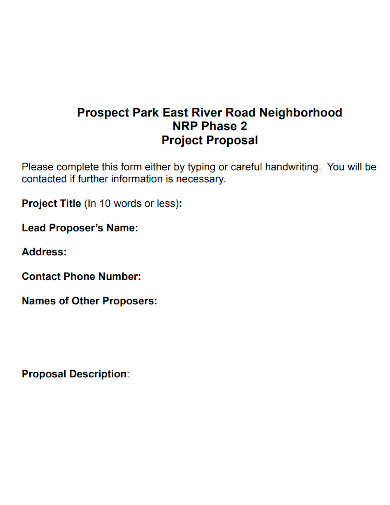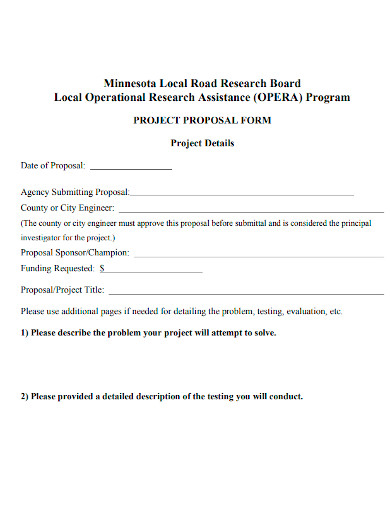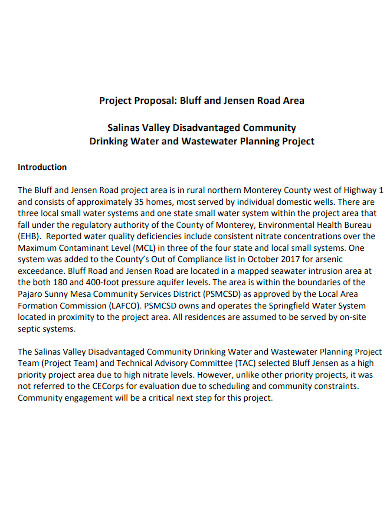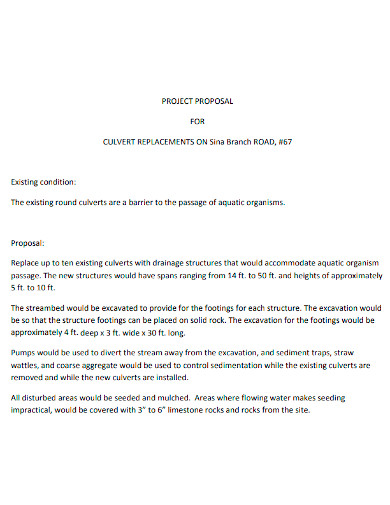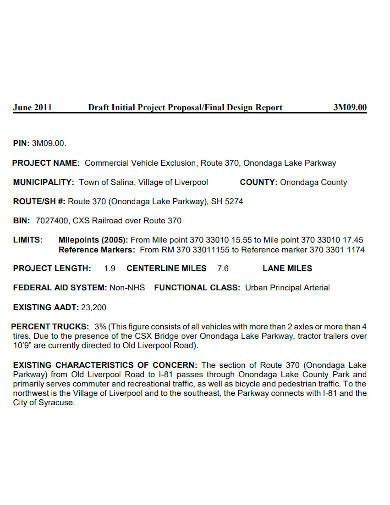In order for a community to grow and develop, this would require several infrastructure related projects. One of which, is a road project proposal which is quite important to the people and business operations within that community. Good roads essentially connect other places and is a contributing factor to economic development and growth which brings important social and business benefits. Without a proper road way system, this would hinder a lot of important aspects in a thriving community. Read more about road project proposal in our article today and for ready made templates, check out our road project proposal samples below:
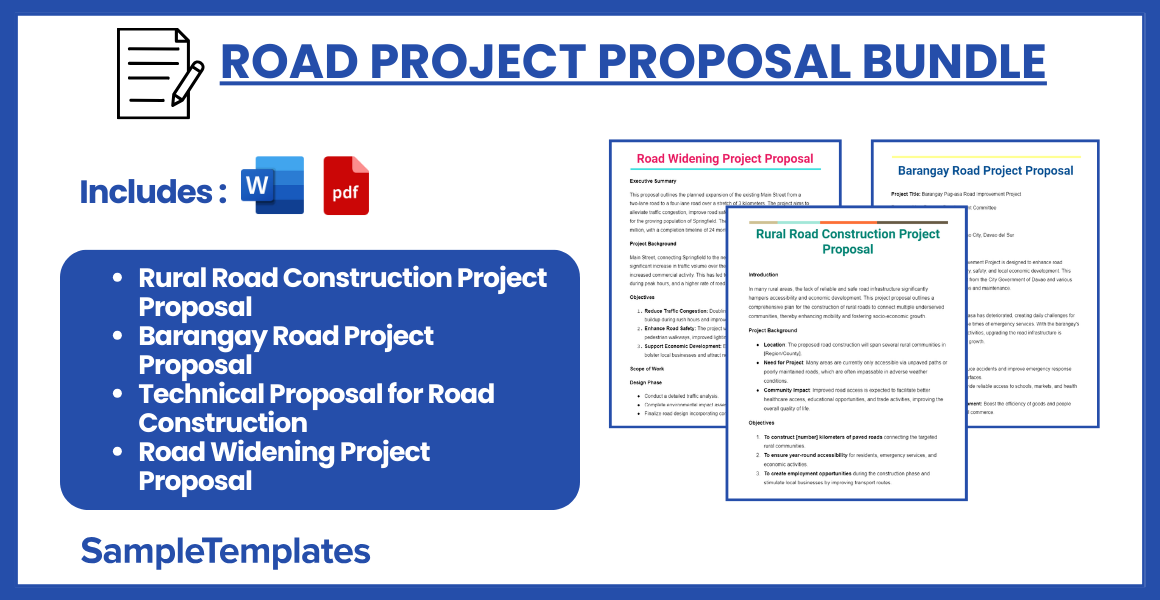
Download Road Project Proposal Bundle
Rural Road Construction Project Proposal
Introduction
In many rural areas, the lack of reliable and safe road infrastructure significantly hampers accessibility and economic development. This project proposal outlines a comprehensive plan for the construction of rural roads to connect multiple underserved communities, thereby enhancing mobility and fostering socio-economic growth.
Project Background
- Location: The proposed road construction will span several rural communities in [Region/County].
- Need for Project: Many areas are currently only accessible via unpaved paths or poorly maintained roads, which are often impassable in adverse weather conditions.
- Community Impact: Improved road access is expected to facilitate better healthcare access, educational opportunities, and trade activities, improving the overall quality of life.
Objectives
- To construct [number] kilometers of paved roads connecting the targeted rural communities.
- To ensure year-round accessibility for residents, emergency services, and economic activities.
- To create employment opportunities during the construction phase and stimulate local businesses by improving transport routes.
Scope of Work
- Surveying and Planning: Conduct detailed topographical surveys and community consultations to finalize the road routes and specifications.
- Construction Phases:
- Phase 1: Ground preparation and laying of sub-base materials.
- Phase 2: Paving with asphalt or concrete, depending on budget and terrain.
- Phase 3: Installation of road safety features like signs, speed bumps, and guardrails.
- Quality Assurance: Regular monitoring and evaluation to ensure adherence to safety and construction standards.
Project Timeline
- Planning and Design: [Month/Year] to [Month/Year]
- Construction Start: [Month/Year]
- Expected Completion: [Month/Year]
Budget Overview
- Total Estimated Cost: $[amount]
- Includes costs for materials, labor, machinery, and administrative expenses.
- Funding Sources:
- Government grants, local community contributions, and potential international aid.
Sustainability and Maintenance
- Road Maintenance Plan: Establish a routine maintenance schedule to ensure longevity and usability of the roads.
- Environmental Considerations: Implement erosion control measures and ensure minimal environmental disruption during construction.
Conclusion
This project is critical for unlocking the potential of rural communities by providing robust infrastructure that supports economic growth and enhances the daily lives of residents. The completion of this road network will serve as a catalyst for development and integration into the broader economic activities of the region.

Barangay Road Project Proposal
Project Title: Barangay Pag-asa Road Improvement Project
Proposed by: Pag-asa Development Committee
Date: September 18, 2024
Location: Barangay Pag-asa, Davao City, Davao del Sur
Executive Summary
The Barangay Pag-asa Road Improvement Project is designed to enhance road infrastructure to improve accessibility, safety, and local economic development. This proposal seeks funding and support from the City Government of Davao and various NGOs to facilitate essential upgrades and maintenance.
Background
The road network in Barangay Pag-asa has deteriorated, creating daily challenges for residents and hindering the response times of emergency services. With the barangay’s growing population and economic activities, upgrading the road infrastructure is imperative for sustained community growth.
Project Objectives
- Enhance Road Safety: Reduce accidents and improve emergency response times by refurbishing road surfaces.
- Improve Accessibility: Provide reliable access to schools, markets, and health centers.
- Support Economic Development: Boost the efficiency of goods and people movement, encouraging local commerce.
Project Scope
- Road Resurfacing: Upgrade and resurface 3 kilometers of the main barangay road.
- Drainage System Installation: Construct a new drainage system along the roads to prevent seasonal flooding.
- Installation of Street Lighting: Install 40 solar-powered street lights to enhance night-time visibility and security.
Stakeholders
- Davao City Government
- Barangay Pag-asa Council
- Residents of Barangay Pag-asa
- Local Entrepreneurs and Market Vendors
Methodology
- Initial Survey: A detailed survey by a certified civil engineer to assess the current road conditions.
- Stakeholder Consultations: Monthly town hall meetings to engage with the community and adjust plans based on feedback.
- Construction Phases: The project will be divided into three main phases: preparation, execution, and finalization with quality checks.
Timeline
- Planning and Design: October – November 2024
- Construction Start: January 2025
- Expected Completion: December 2025
Budget
| Description | Quantity | Unit Cost | Total Cost |
|---|---|---|---|
| Road Resurfacing | 3 km | $50,000/km | $150,000 |
| Drainage System | 3 km | $30,000/km | $90,000 |
| Street Lighting | 40 units | $500/unit | $20,000 |
| Total | $260,000 |
Funding
The project will be funded through:
- Local Government Budget: $150,000
- NGO Grants: $60,000
- Community Fundraising: $50,000
Risks and Mitigation Strategies
- Weather Delays: Adjust construction schedules to accommodate weather conditions and potential delays.
- Budget Overruns: Regular audits and contingency funds of 10% of the budget.
- Community Disruption: Continuous engagement and transparent communication with the community to minimize impact.
Monitoring and Evaluation
Performance indicators will include road quality post-completion, accident rates, and community satisfaction surveys.
Conclusion
The Barangay Pag-asa Road Improvement Project is critical for enhancing community safety and economic stability. We invite all stakeholders to support this transformative initiative.
Contact Information:
Pag-asa Development Committee
Barangay Hall, Pag-asa, Davao City
+63 912 3456 789
[email protected]
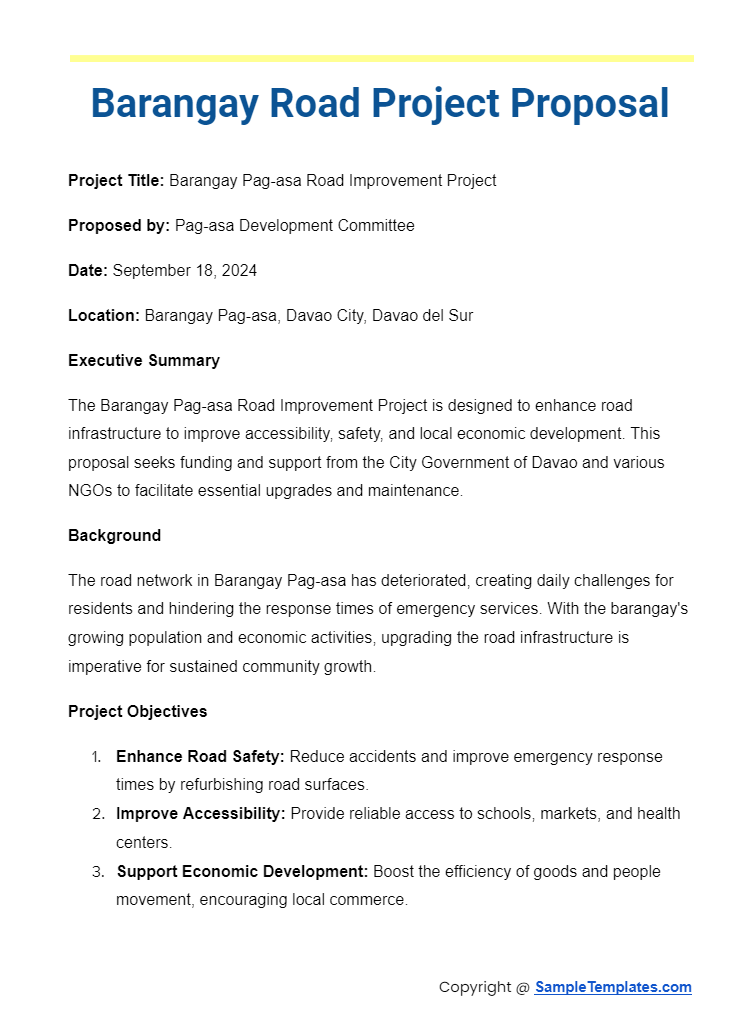
Technical Proposal for Road Construction
1. Executive Summary
This proposal outlines the planned road construction project on Route X, designed to enhance traffic flow and safety. The project spans approximately 5 kilometers and aims to address current issues of road degradation and traffic congestion, thereby improving connectivity and reducing travel time.
2. Project Background
Route X has experienced significant wear and traffic increases over the past decade, leading to safety concerns and slow traffic movement. The proposed project will reconstruct and widen the existing road, incorporating modern infrastructure standards to accommodate future growth and ensure long-term utility.
3. Project Objectives
- Enhance Road Safety: Reducing accident rates through improved road design and quality.
- Improve Traffic Flow: Widening the road to reduce congestion during peak hours.
- Sustainable Construction: Utilizing eco-friendly materials and practices to minimize environmental impact.
4. Scope of Work
- Surveying and Planning: Detailed topographical and geotechnical surveys to design the road alignment and structure optimally.
- Road Widening and Reconstruction: Expanding the road to four lanes and reconstructing the base with high-quality materials.
- Installation of Safety Features: Implementing modern safety features including reflective road markers, proper signage, and guardrails.
- Environmental Mitigation Measures: Establishing protocols to protect local wildlife and reduce noise and dust during construction.
5. Project Methodology
- Phase 1: Planning and Approvals (Month 1-3)
- Securing necessary permits and finalizing project designs.
- Phase 2: Procurement and Mobilization (Month 4)
- Procuring materials and machinery required for the project.
- Phase 3: Construction Execution (Month 5-12)
- Actual road construction activities, divided into manageable sections to minimize disruption.
- Phase 4: Quality Assurance and Control (Month 13)
- Testing and ensuring all construction meets or exceeds standards.
- Phase 5: Project Close-Out and Handover (Month 14)
- Final inspections, documentation, and handover to the local government.
6. Project Deliverables
- Construction Schedule: Detailed timeline of all project phases.
- Progress Reports: Monthly updates detailing construction status, budget adherence, and any contingencies.
- Final Project Report: A comprehensive overview of the project upon completion, including a post-construction evaluation.
7. Budget Estimate
The total estimated cost of the road construction project is $5 million. This includes all direct and indirect costs such as labor, materials, machinery, and administrative expenses.
8. Risk Management
- Weather Delays: Implementing flexible scheduling and protective measures to mitigate weather-related delays.
- Budget Overruns: Careful monitoring and approval processes for all expenditures.
- Compliance Risks: Regular reviews to ensure all construction practices comply with local regulations and standards.
9. Conclusion
This technical proposal provides a comprehensive plan for the construction and enhancement of Route X. Through strategic planning, modern construction techniques, and rigorous project management, this project aims to deliver significant improvements in traffic management and road safety.
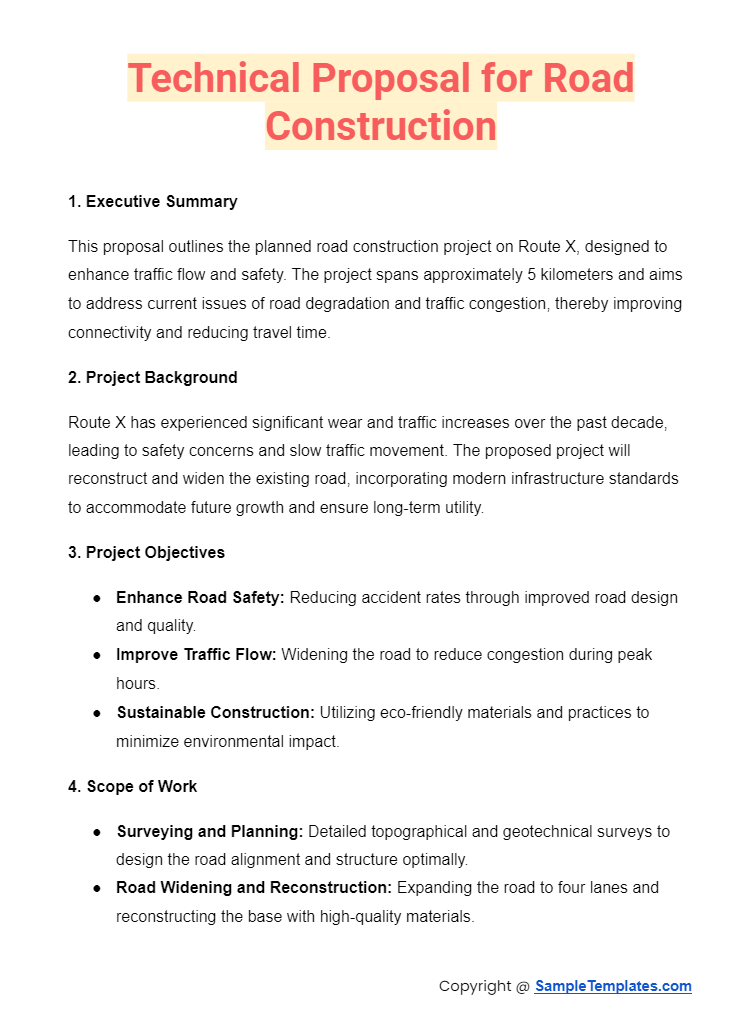
Road Widening Project Proposal
Executive Summary
This proposal outlines the planned expansion of the existing Main Street from a two-lane road to a four-lane road over a stretch of 3 kilometers. The project aims to alleviate traffic congestion, improve road safety, and facilitate smoother transportation for the growing population of Springfield. The estimated cost of the project is $15 million, with a completion timeline of 24 months.
Project Background
Main Street, connecting Springfield to the neighboring town of Hillview, has seen a significant increase in traffic volume over the past decade due to population growth and increased commercial activity. This has led to increased traffic congestion, especially during peak hours, and a higher rate of road accidents.
Objectives
- Reduce Traffic Congestion: Doubling the lanes will significantly reduce traffic buildup during rush hours and improve the flow of vehicles.
- Enhance Road Safety: The project will include modern safety features such as pedestrian walkways, improved lighting, and advanced signaling systems.
- Support Economic Development: Easier access and reduced travel time will bolster local businesses and attract new investments.
Scope of Work
Design Phase
- Conduct a detailed traffic analysis.
- Complete environmental impact assessment.
- Finalize road design incorporating community feedback.
Construction Phase
- Demolition and removal of existing road structures.
- Earthwork and laying of sub-base materials.
- Paving of new lanes and application of road markings.
- Installation of signs, signals, and lighting.
Quality Assurance and Control
- Regular site inspections and audits.
- Compliance checks with construction standards and safety regulations.
Budget
| Item | Estimated Cost |
|---|---|
| Engineering and Design | $2,000,000 |
| Construction Materials | $8,000,000 |
| Labor | $3,000,000 |
| Contingency and Overhead | $2,000,000 |
| Total | $15,000,000 |
Risk Management
- Delays in Construction: Mitigated by stringent contract terms with penalties for overdue milestones.
- Budget Overruns: A 10% contingency fund to handle unforeseen expenses.
- Environmental Impact: Ensuring all environmental guidelines and laws are adhered to.
Project Timeline
- Design Phase: 6 months
- Construction Phase: 18 months
- Commissioning: 2 months
Conclusion
The proposed road widening of Main Street is a strategic response to the current needs and future growth of Springfield. The project promises not only to improve daily commutes but also to ensure safety and foster economic development.
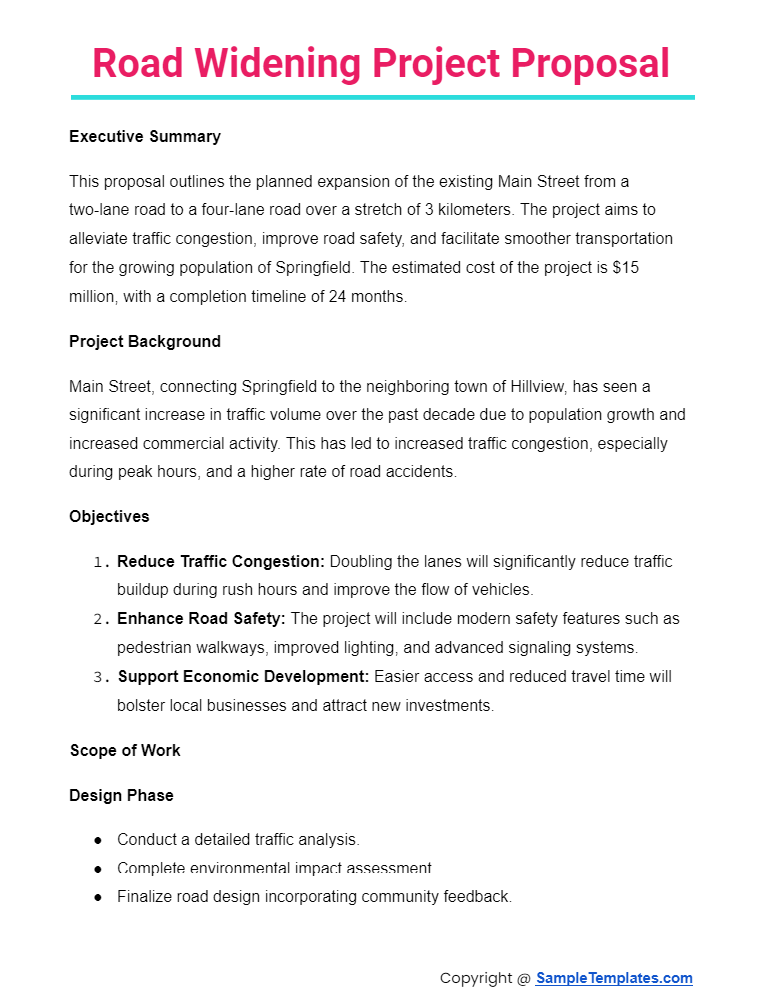
Browse More Templates On Road Project Proposal
Road Project Proposal Samples
Road Rehabilitation Project Proposal
Road Maintenance Project Proposal
Benefits of Road Project Proposal
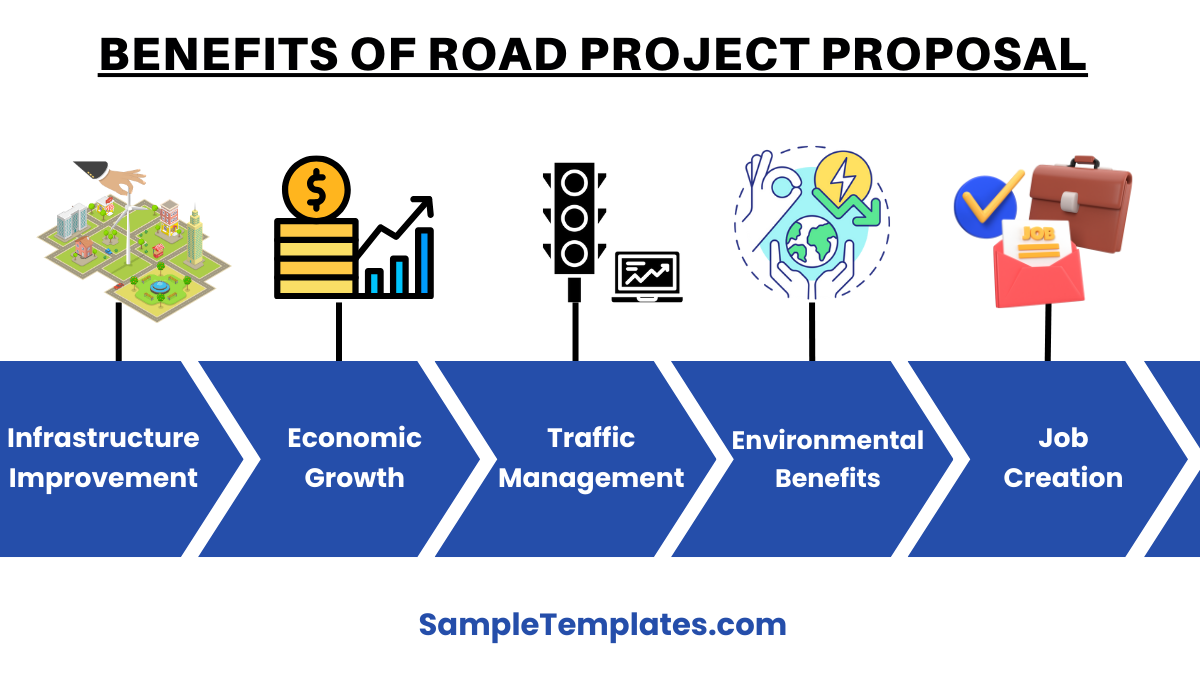
- Infrastructure Improvement: Enhances the overall transportation infrastructure, making roads safer and more efficient for vehicles and pedestrians. You can also see more on Road Construction Proposal.
- Economic Growth: Spurs economic development by improving access to businesses, reducing transportation costs, and attracting investments.
- Traffic Management: Addresses congestion issues, reducing travel time and improving the flow of traffic through better road design and management strategies.
- Safety Enhancements: Increases road safety through the implementation of modern design standards, better signage, and safer pedestrian crossings, reducing accident rates. You can also see more on Construction Business Proposal.
- Environmental Benefits: Includes considerations for environmental impact, potentially incorporating green solutions like improved drainage systems and pollution reduction measures.
- Community Connectivity: Improves connectivity within and between communities, making it easier for people to access services, work, and education.
- Job Creation: Generates employment opportunities during the construction phase and, indirectly, through the enhanced economic activities facilitated by improved road access. You can also see more on Construction Request for Proposal.
- Property Value Increase: Often leads to an increase in property values in the areas surrounding the improved roads due to enhanced accessibility and reduced congestion.
Editable Road Project Proposal
Road Project Proposal Format
Road Project Proposal Form
How to Use Project Proposal for Road Construction?
- Define Objectives: Clearly state the purpose and objectives of the road construction project. Explain what the project intends to achieve, such as improving traffic flow, enhancing safety, or stimulating economic growth. You can also see more on Construction RFI.
- Conduct Feasibility Studies: Include information from feasibility studies that assess the environmental, economic, and social impacts of the project. This should cover everything from terrain analysis to potential disruptions and benefits to the local community.
- Outline the Scope: Specify the scope of the project in detail, including the exact segments of road to be constructed or rehabilitated, the types of services required, and the engineering specifications.
- Budget Planning: Provide a detailed budget that includes all costs associated with the project, such as labor, materials, equipment, and any unforeseen contingencies. Ensure the budget is realistic and comprehensive.
- Timeline and Milestones: Include a clear timeline with key milestones and deadlines. This should outline each phase of the project from the initial groundwork to the final touches. You can also see more on Construction Sponsorship Proposal.
- Stakeholder Engagement: Identify all stakeholders involved, from government bodies and local authorities to community groups and contractors. Explain how they will be engaged and what their roles and responsibilities are.
- Risk Management: Identify potential risks and challenges that could impact the project timeline, budget, or outcomes. Provide strategies for mitigating these risks to keep the project on track.
- Monitoring and Evaluation: Describe the mechanisms that will be used for ongoing monitoring and evaluation of the project. This should include how progress will be reported and how project outcomes will be measured against the initial objectives.
Standard Road Project Proposal
Basic Road Project Proposal
Printable Road Project Proposal
Tips for Preparing a Road Project Proposal
- Understand Requirements: Familiarize yourself with the specific requirements and guidelines of the agency or body to which the proposal is being submitted. This ensures that your proposal meets all necessary criteria and standards.
- Define Project Goals: Clearly articulate the goals of the road project, focusing on how it will address specific problems like congestion, safety, or infrastructure aging. Be specific about the benefits and the impact on the community.
- Gather Data: Collect and present relevant data to support the necessity of the project. This might include traffic studies, accident statistics, and economic impact assessments that justify the project’s implementation.
- Outline the Scope: Provide a detailed description of the project scope, including geographical boundaries, road types, construction methodologies, and materials to be used. This clarity helps prevent scope creep and ensures all stakeholders have the same expectations.
- Include Detailed Budgets: Create an itemized budget that includes all costs—direct and indirect. Provide justifications for the expenses and demonstrate cost-effectiveness without compromising quality.
- Develop a Timeline: Establish a realistic timeline with milestones and phases. Clearly indicate the start and completion dates, and highlight critical milestones that are essential for the project’s progress.
- Identify Stakeholders and Roles: List all parties involved, from government departments to subcontractors. Define their roles and responsibilities, and describe how they will collaborate to achieve project objectives.
- Risk Assessment and Mitigation: Analyze potential risks that could derail the project, such as funding shortages, environmental concerns, or community opposition. Propose practical strategies to mitigate these risks, showing preparedness to handle unforeseen issues.
Strategic Road Project Proposal
Road Initial Project Proposal
What Is a Road Project Proposal?
A road project proposal is document that outlines the internal and external factors of a proposed road infrastructure project. It aims is to secure funding, resources and approval from various relevant sectors. It includes what you want to accomplish, an explanation of objectives, and sample plans for achieving them. It is common for a project proposal to include a list of activities or tasks that will be associated with the project, illustrate the significance of this specific project idea, and explain the origins of this project.
How To Write a Road Project Proposal?

Like most project proposals, a road project proposal should contain a purpose, attainable goals, specific objectives, method, and anticipated impact. Objectives need to be stated in measurable terms and be specific and consistent with the statement of need and the purpose of the proposed project. Remember a well-written road project proposal aims to persuade and inform relevant parties to proceed and finance the road infrastructure project, may this be to pave way for a new road or to rehabilitate existing one. Each proposal may differ in regards of format but more or less may contain the same following essential elements of a typical project proposal document.
I. Project Overview
Provide the project name and the project details in which you have to cover the rationale/objectives, key benefits, location and progress to date. You will have to address how your proposed project intends to solve the problem, and discusses what a successful project looks like.
II. Project Scope
This section details how the problem or opportunity was determined, why should be it eligible for funding and the options the funding explored before settling on the final scope.
- Problem or Opportunity Statement: describe the problem or opportunity as a succinct statement that clearly identifies the cause and effect of the problem or opportunity. Include evidence and data to demonstrate the scale of the problem/opportunity and the need for any funding to address the problem and/or make the most of the opportunity.
- Scope of Project : Type of work being undertaken (duplication, widening, sealing, intersection upgrades etc.) and safety system principles incorporated in the road project.
- Eligibility to any legal regulations or laws.
III. Project Cost
This section considers project cost information and includes a summary of the data required. Overall project cost can be summarize in a form of a table.
IV. Project Benefits
Provide qualitative and quantitative data that will be used to highlight the benefits of the road project. Include a summary of the expected positive outcomes and benefits to be delivered by the project. Examples of which are as follows:
- Amenities and reliability
- Safety the project provides
- Active transport benefits
- Travel Time Saving: Minutes saved by commuters on their daily commute to work and average time savings for people on trips for leisure activities.
- Economic Benefits
- Construction and Operational Jobs : a number of jobs that could be supported in lieu with the road project
- Environmental Benefits
V. Risk and Sustainability
Every project comes with its risk, make sure to include this in your proposal as to be transparent to the readers. Determine where the responsibility for managing these risks lies, and how sustainability can be built into the road project to increase its overall benefit.
VI. Authorization
This section states explicitly who the project’s decision-makers are and the stakeholders authorized by the client to make approval/sign-off decisions.
FAQs
How Long Do Road Projects Take?
Depending on the funds and the environmental and social factors, road projects can take years because of the enormous amount of work that is involved. It usually takes at least two or three years, and sometimes 10 or more. Before construction begins, years of project research must be done.
Who Is Responsible for Maintaining State Roads?
The state highways are maintained by the respective states or union territories depending on each country through their public works department (PWD). They oversee and manage the road infrastructures.
Who Finance Road Projects?
Road projects are finance by a country’s respective governing agency or at times by a private sector depending on the agreement and terms.
Without roads or poor management of road infrastructures can result to numerous inconvenience for not only the people residing within the community but can cause major interruptions to the business community, create negative impact to the environment and incur major cost. This is why, a well-written road project proposal can help deter all the aforementioned inconvenience and help a community or a country as a whole strive economically and socially.
Related Posts
Proposal Samples
Sports Event Proposal Samples
Small Business Proposal Samples
Title Project Proposal Samples [ Community, School, Student ]
FREE 10+ Product Supply Proposal Samples in MS Word | Google Docs | Apple Pages | PDF
FREE 10+ Health Project Proposal Samples [ Public, Mental, Healthcare ]
FREE 11+ Engineering Project Proposal Samples in PDF | MS Word
FREE 4+ Racing Sponsorship Proposal Samples [ Team, Car, Driver ]
FREE 10+ Nursing Project Proposal Samples [ Community, Health, Clinical ]
FREE 11+ Student Council Proposal Samples in PDF | DOC
FREE 10+ Facilities Management Proposal Samples in MS Word | Google Docs | Apple Pages | PDF
FREE 8+ Joint Venture Proposal Samples [ Commercial, Real Estate, Construction ]
FREE 10+ Scholarship Proposal Samples [ Project, Grant, Sponsorship ]
FREE 10+ Computer Purchase Proposal Samples in MS Word | Google Docs | Apple Pages | PDF
FREE 10+ Network Project Proposal Samples [ Design, Security, Bank ]
